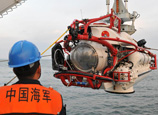
3. Difficulty in integrating into the society. The above two difficulties necessarily make it difficult for drug rehabilitation and recovery personnel to integrate into the society. People regard drug abuse as “pestilence” and drug addicts as “monsters,” and most of them do not believe that complete drug rehabilitation is possible. Therefore, drug addicts who return to the society even after fully getting rid of drug addiction will not be admitted and respected by the society, and they cannot live like normal people. As a result, such people cannot integrate into the society after their return (the society does not integrate them into it, and people stay away from drugs, as well as drug addicts).
4. High relapse rate. The three difficulties in drug rehabilitation consolidation, management and control, and integration into the society lead to high relapse rate. (According to monitoring data of relevant departments, the relapse rate of drug addicts in drug rehabilitation centers maintains high, and the relapse rate within one month reaches 51.6%, and that within one year amounts to 88%.) High relapse rate leads to grave consequences: firstly, to raise drug money, relapse personnel start to conduct illegal crimes again (robbery, loot, theft, and prostitution, etc.); secondly, the consumption of a large number of drugs by relapse personnel consolidates and stimulates the drug consumption market, which certainly aggravates the crimes of producing, trafficking, transporting, and selling drugs; thirdly, “snowball effect” is produced. Relapse personnel coerce new members to join drug abuse groups, leading to the spreading of drug abuse.















 Busiest line in Beijing: Subway line 10 has reached a daily transportation of 1 million passengers on average
Busiest line in Beijing: Subway line 10 has reached a daily transportation of 1 million passengers on average


![]()
